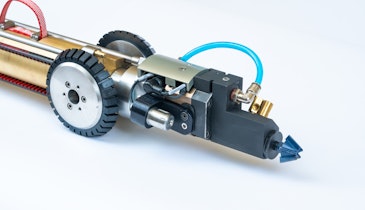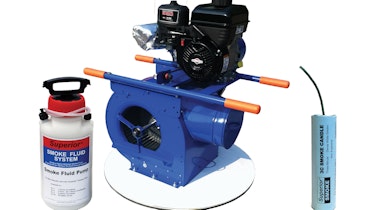For a long time I was trying to be the last person on earth not to have a cell phone — sort of like that Herb fellow in the old Burger King ads who was the only remaining human who had never tasted a Whopper.
Well, I failed, and when I finally gave in a few months ago, I went the distance, getting a BlackBerry on which I can check e-mail, get travel directions, read maps, watch TV, listen to the radio, keep my calendar, surf the Internet, shoot pictures and videos, send text messages, and probably do things I haven’t figured out yet.
The technology we can carry in a shirt pocket today is incredible — but it shouldn’t draw our notice away from the ever-advancing range of technologies available to those whose job it is to keep underground piping clean and sound.
You see these technologies if you go to trade shows like WEFTEC and the Pumper & Cleaner Environmental Expo International. But do you really stop to take them all in? And see how they really could help you?
Seeing the trees
I’m exposed to new technology all the time. A lot of it comes across my desk in the form of press releases from manufacturers. Some of it shows up in our profiles of exemplary cities and utilities. When you’re surrounded by it on an almost daily basis, you become a little immune to excitement. So, once in a while, it’s good to step back and look at the trees instead of the woods, and see what technology has wrought.
Let’s take just a few examples from issues of COLE Publishing magazines. In a future issue (October? November?), we’ll carry a report on a hydroexcavator that actually dewaters as it digs.
What does this mean? Well, in traditional hydro-excavating, you cut the soil with water under pressure, then vacuum out the mud. When your truck’s debris tank is full, you have to go somewhere to dump the spoil and probably to refill the truck’s freshwater tank. That takes time, which of course is money. This new technology constantly dewaters the slurry and recycles and reuses the water — so you can just keep on going.
In fairly recent issues we have described pipe inspection systems (a few companies make them) that essentially take rapid scans of the pipe wall in very little time. People back at the office then sit at a computer and note, measure and code defects. A future issue of MSW will include a Technology Test Drive that shows how one company applies this same technology to manholes and other shafts.
Looking deep
Five years ago, who would have thought a small, handheld device, driven by only a few flashlight batteries, could locate any solid object underground? We profiled such a tool on these pages back in June.
Last month we looked at a way of gathering data on manhole inspections, line cleaning, lift station condition, and many other activities electronically, without paper, and then uploading it to the computer system in the office.
In July, we told how a county in the State of Washington uses laser and sonar technology, in addition to CCTV inspection, to get accurate data on the condition of pipes, even when they are filled with water and a traditional camera can’t see a thing.
Even the lowly manhole gets into the act. Last month we described a new method of adjusting manhole frames to grade in a system that uses set screws. That’s not flashy technology, but it is a highly ingenious way to solve the nagging problem of manhole frames that create bumps in the street, and that break down and allow major infiltration to the sanitary sewer system.
This is just a short list of things we’ve covered recently. There’s more out there, and more gets invented every day.
Are you investing?
Of course, running your department isn’t like having a no-limit toy store gift card. You have a budget that limits what you can spend, and you need to justify what you buy. But for starters, you might consider getting a good fix on what is out there, investigating what might fit your needs, and looking at the long-term cost-benefit equation. If you’re not using some of these new tools, maybe now is the time to find out definitively how they can help you — or how not using them might hurt you.
I more or less got dragged, kicking and screaming, out of pure necessity, into the world of wireless communication. I am certain that already my investment in technology has been paid back many times.
The first text message I got on my BlackBerry came from my 27-year-old daughter. By way of her own BlackBerry, she said: “Dad — hope you like it here in the future.” As it turns out, I do. Explore what’s out there in pipe rehab technology, embrace what you can, and you will probably enjoy it, too.
Comments on this column or about any article in this publication may be directed to editor Ted J. Rulseh, 800/257-7222 or editor@mswmag.com.





